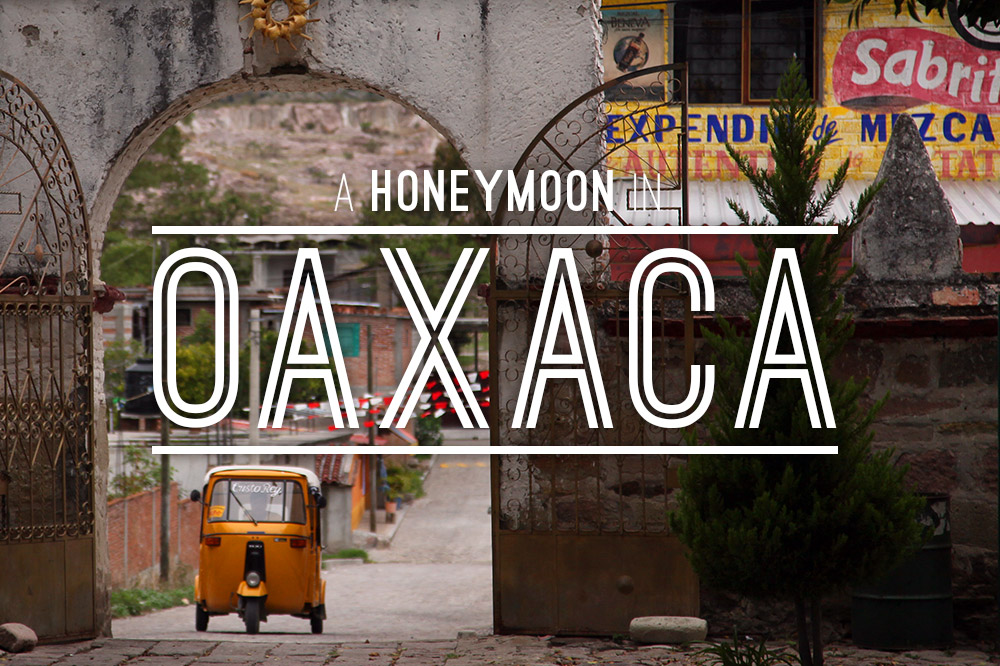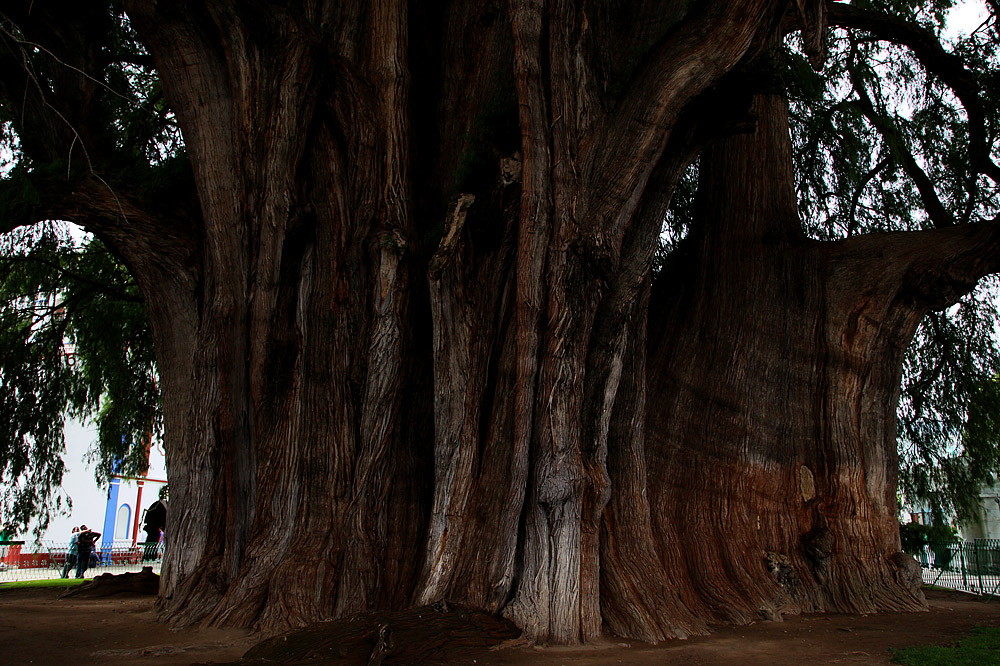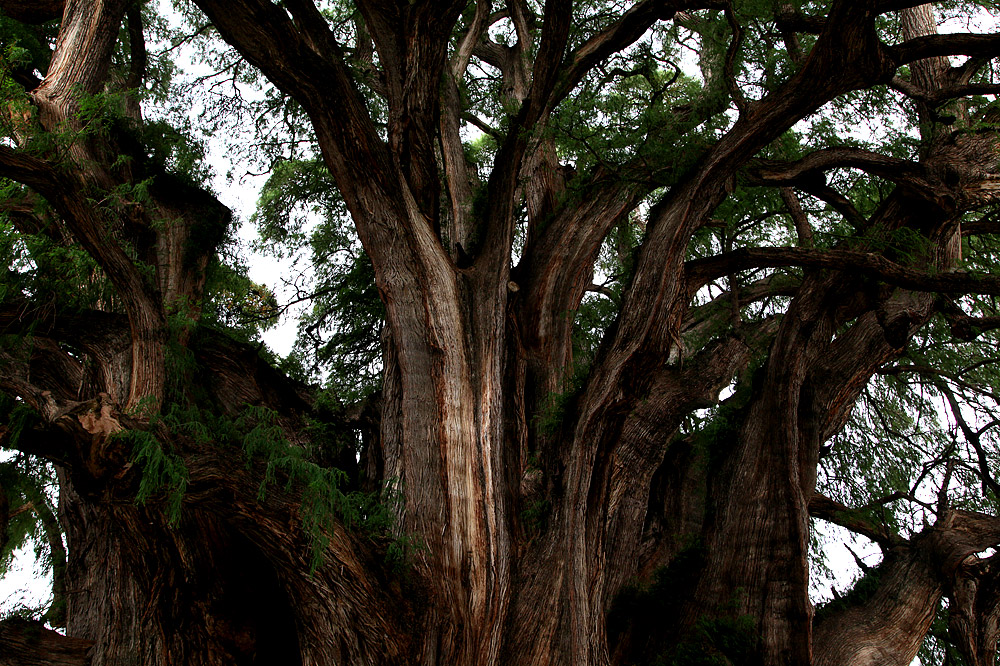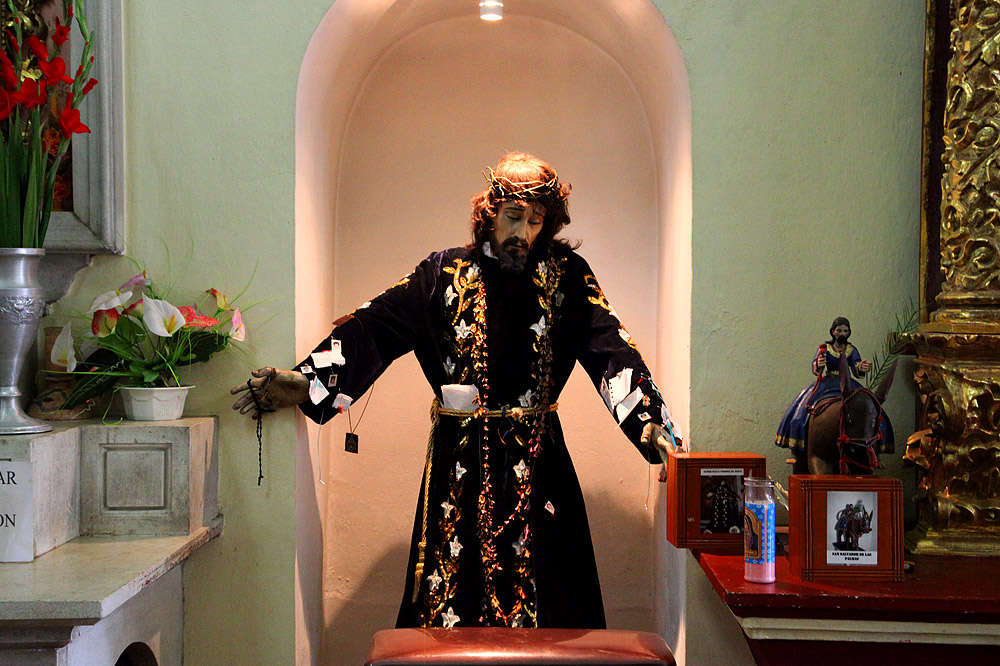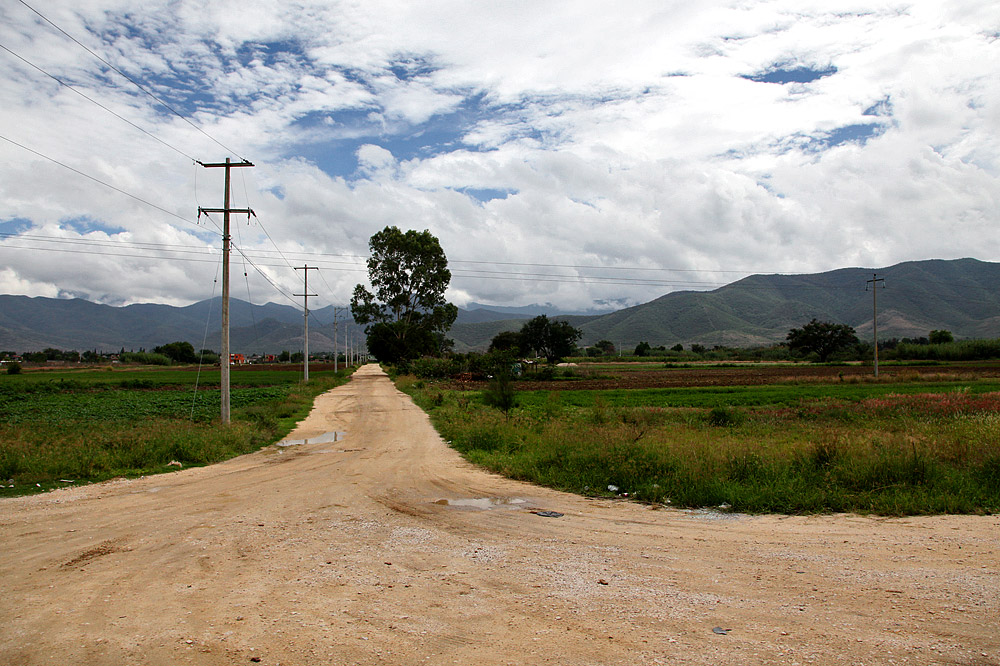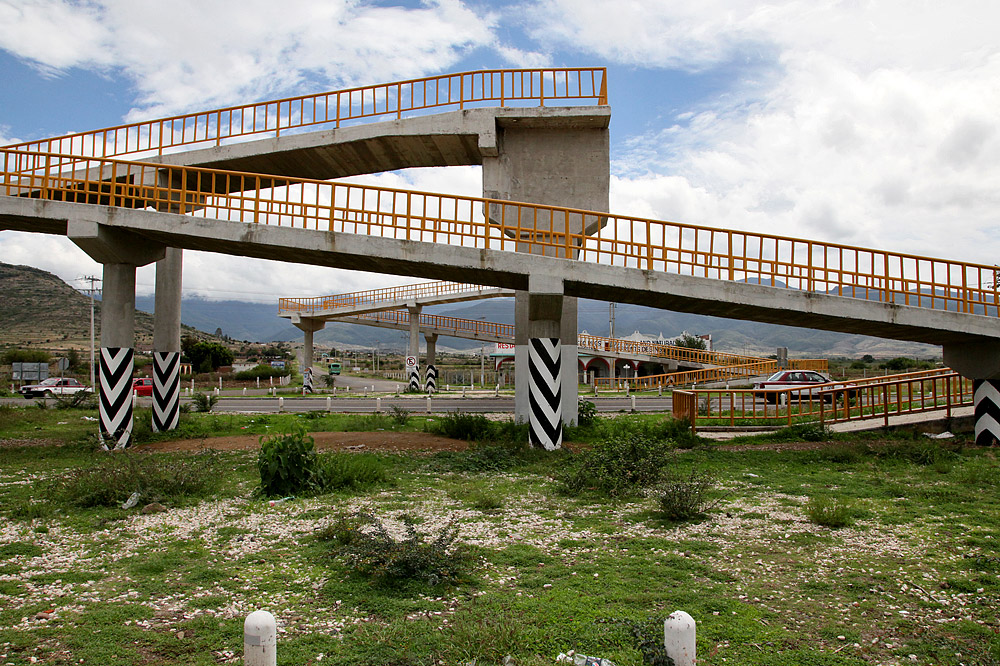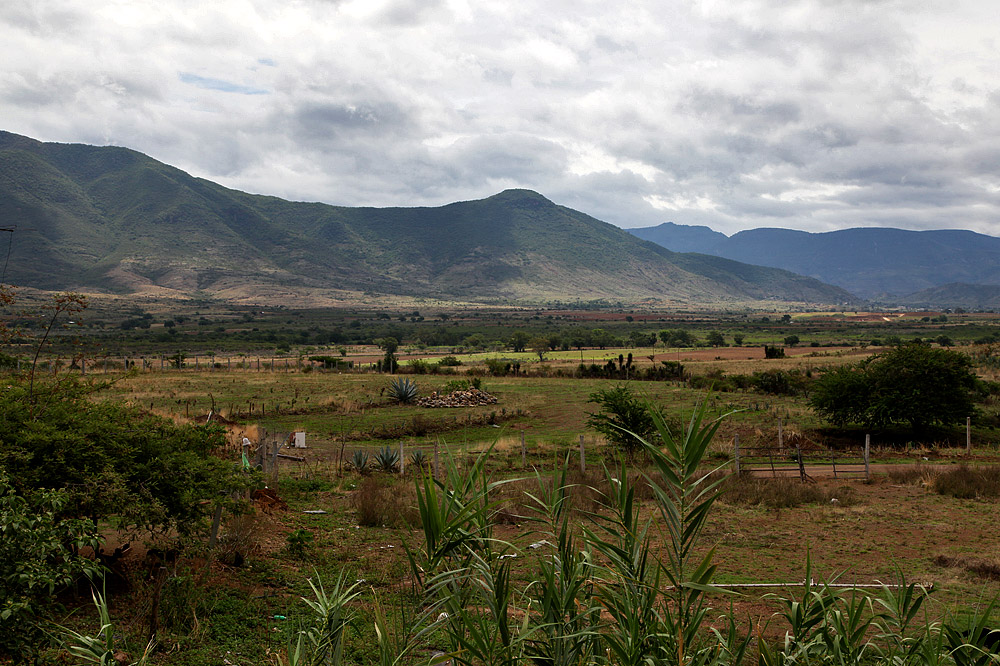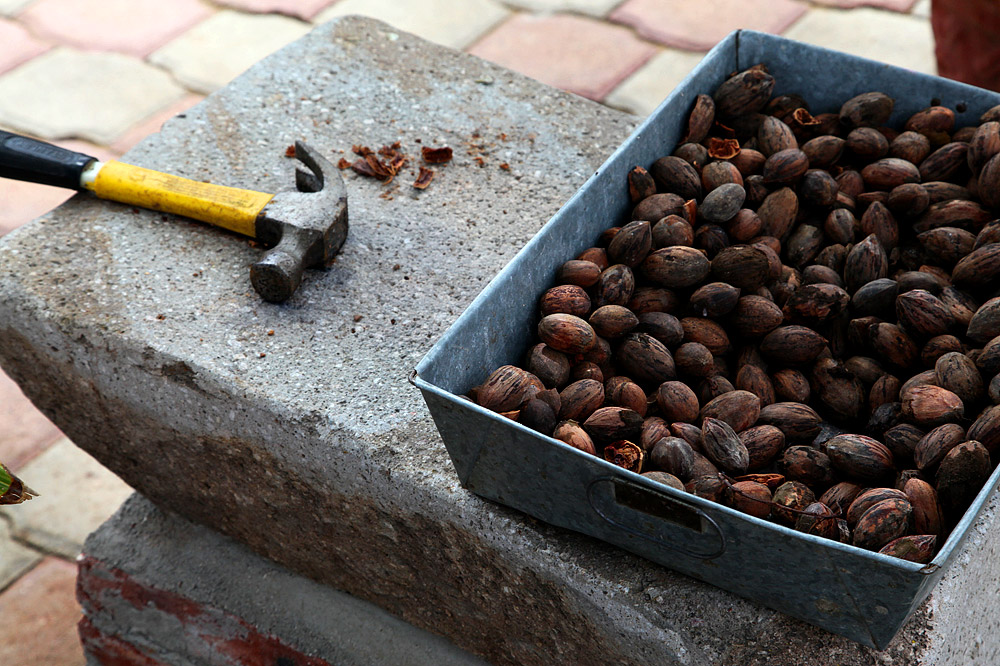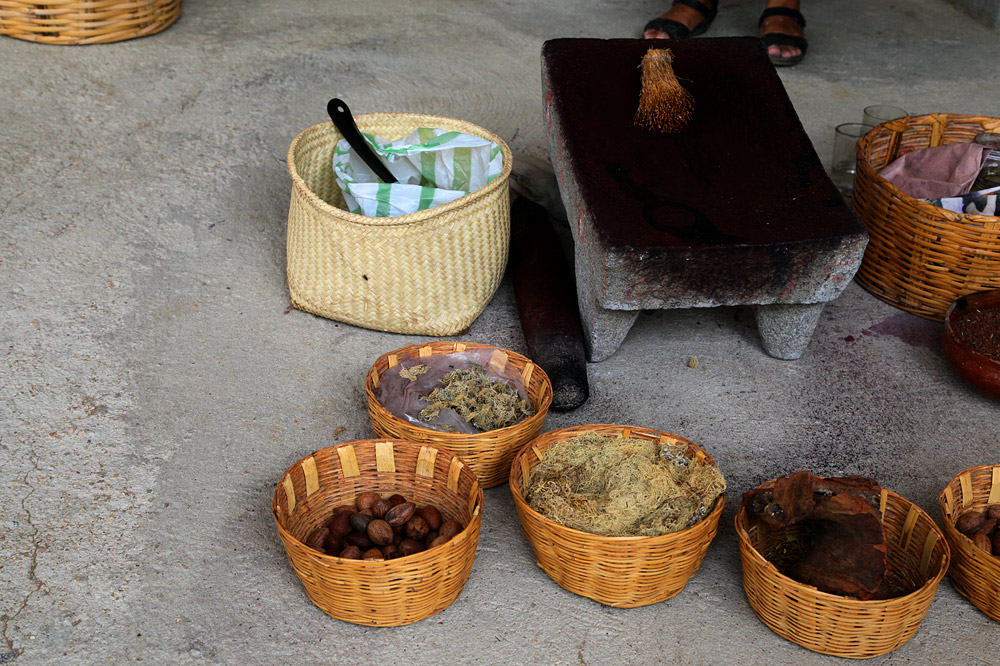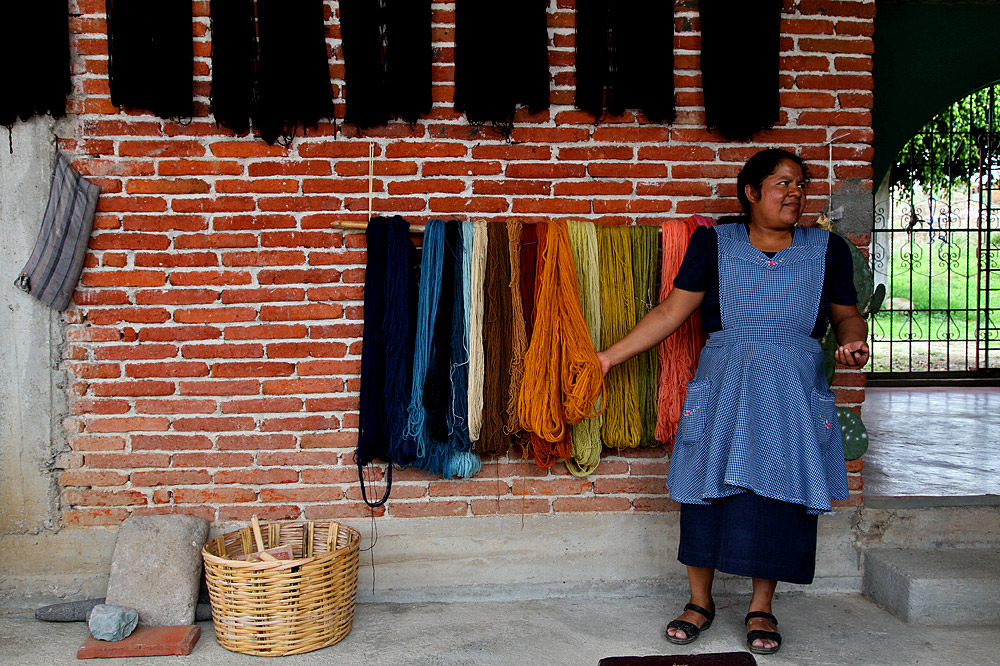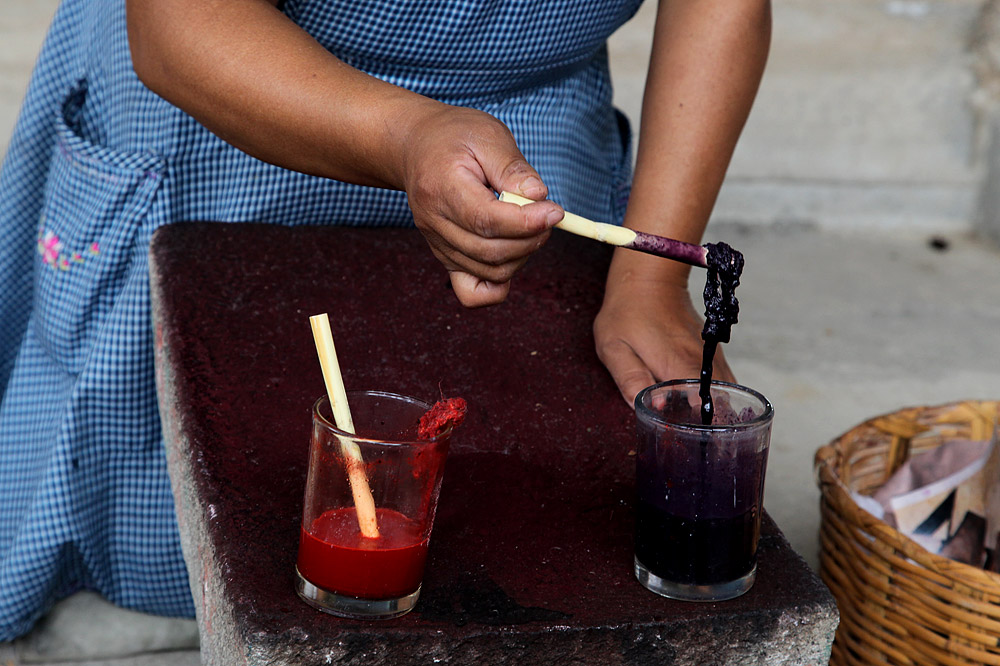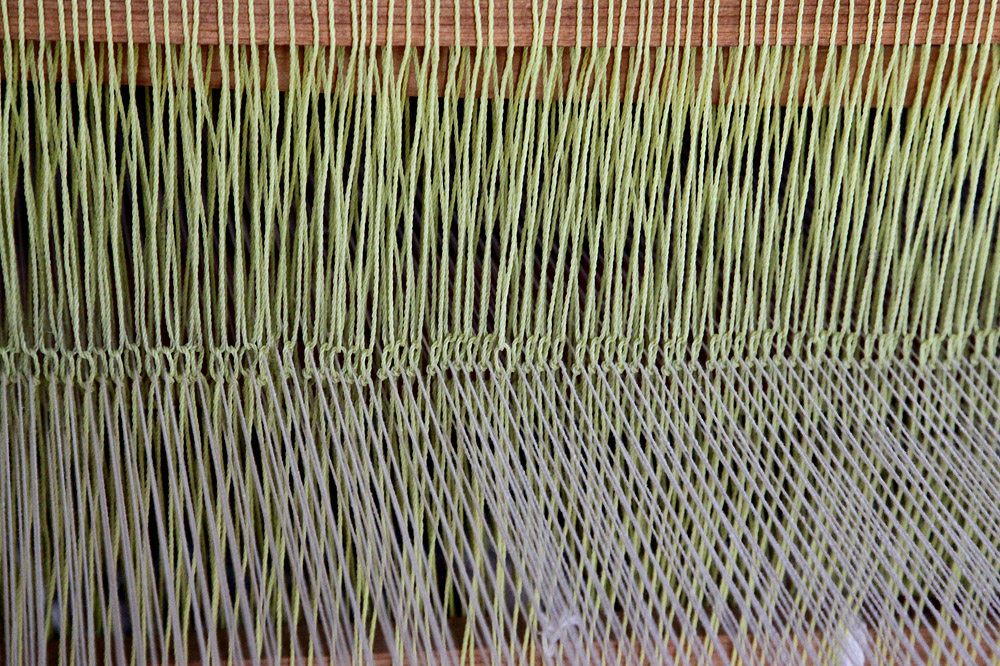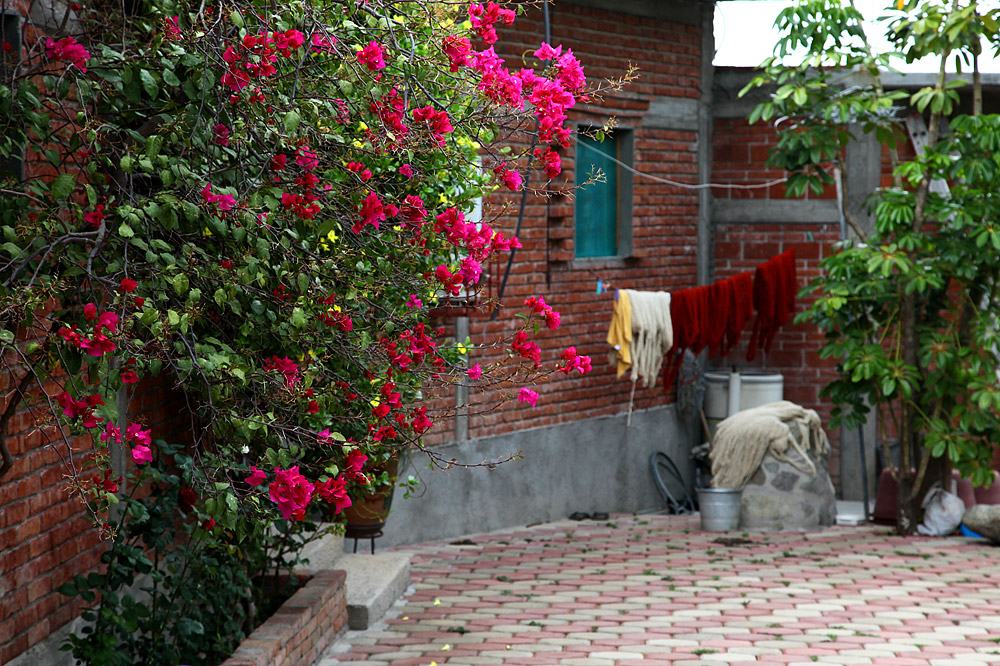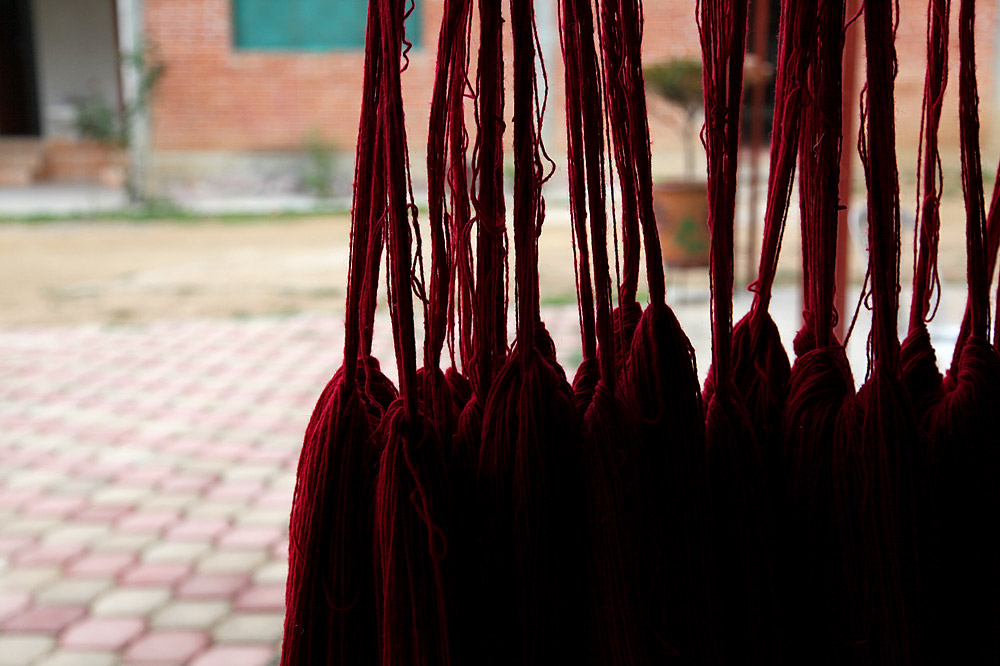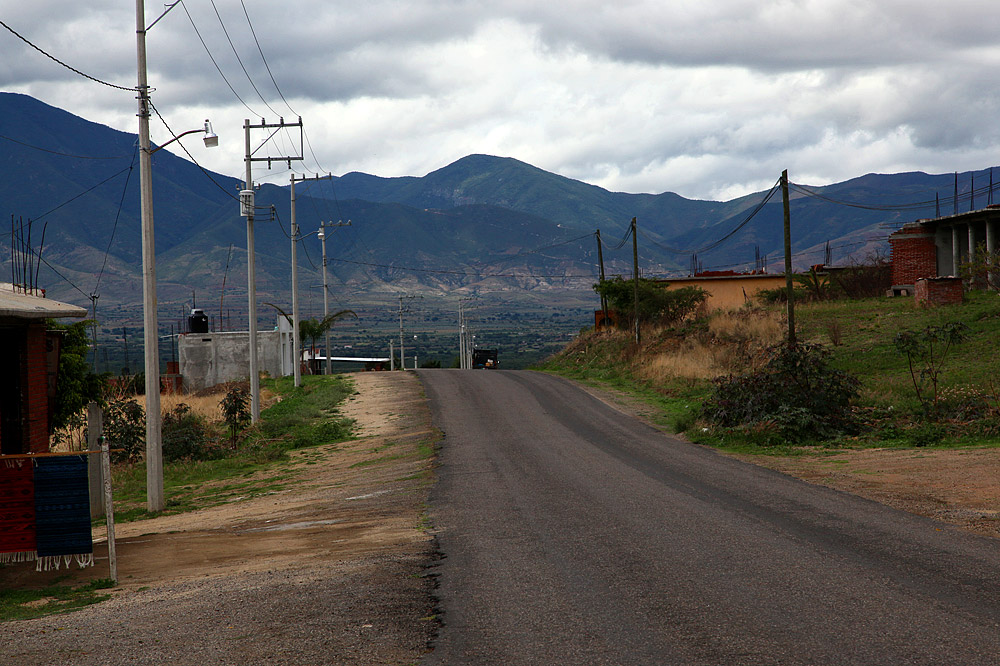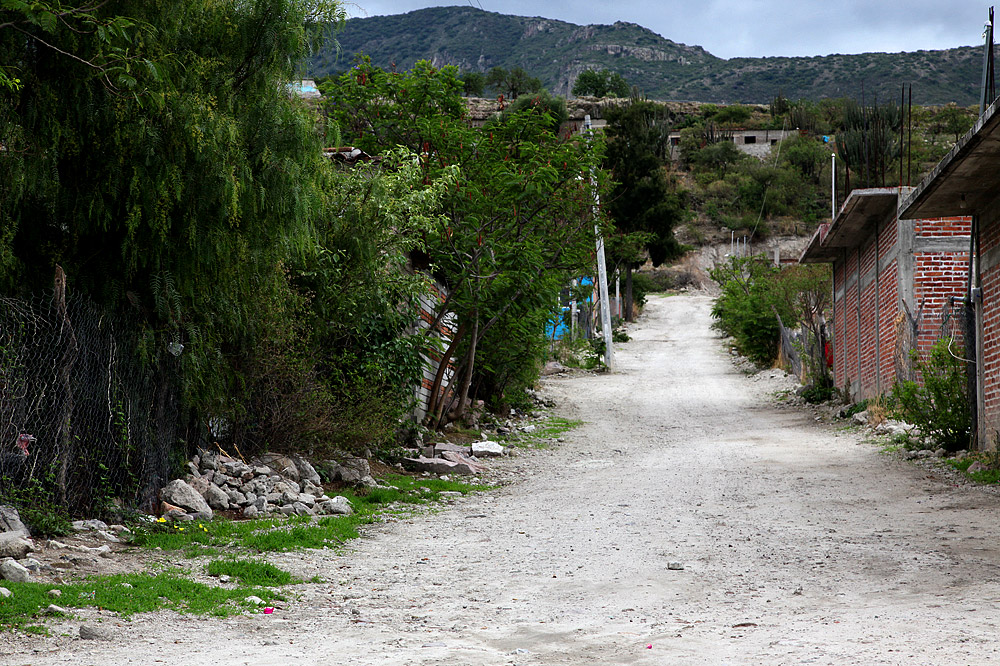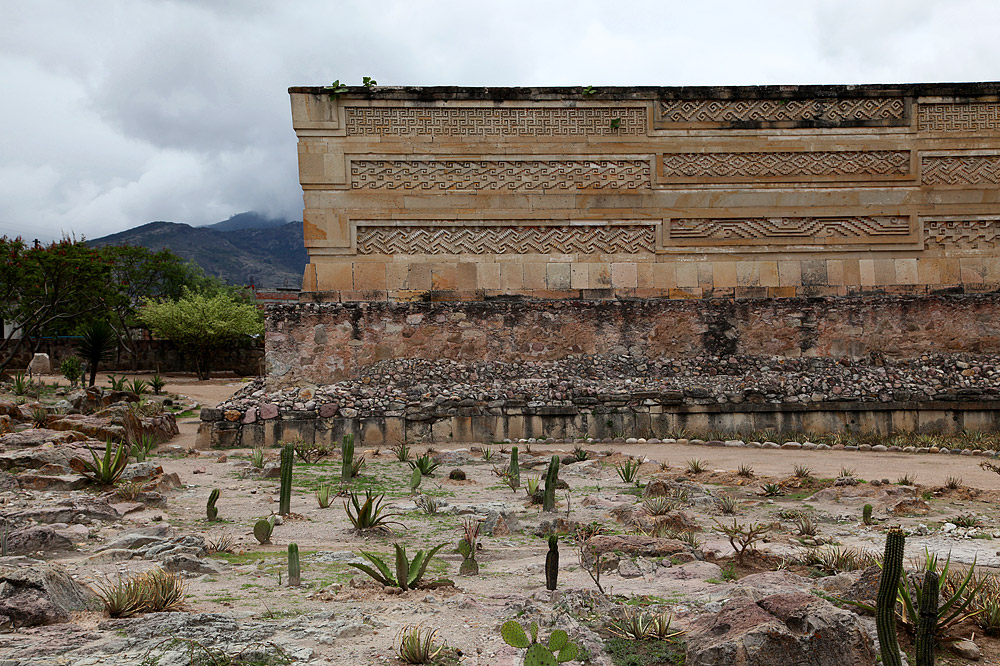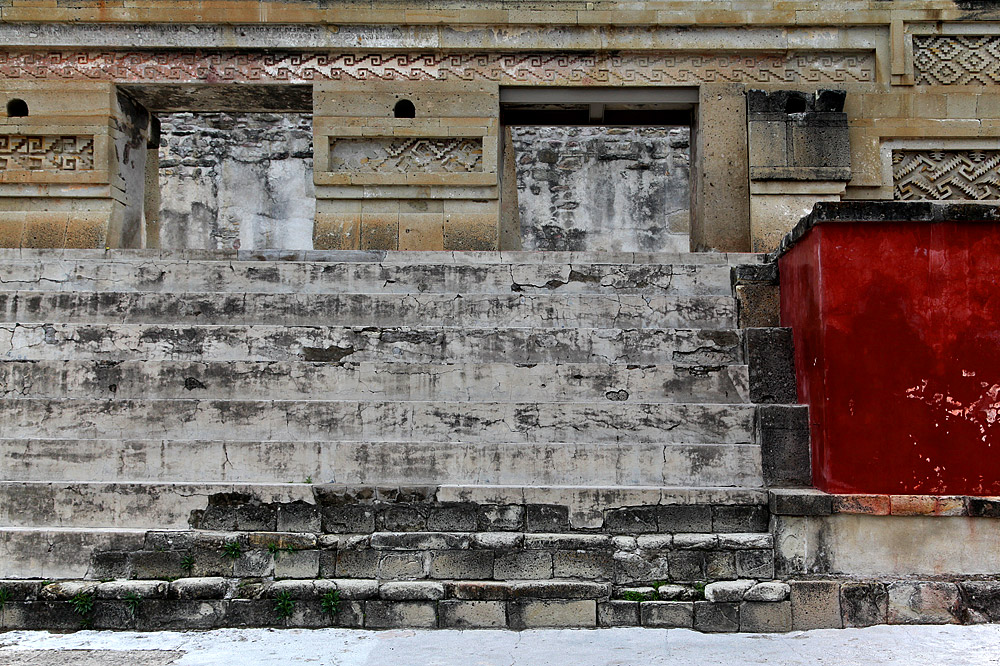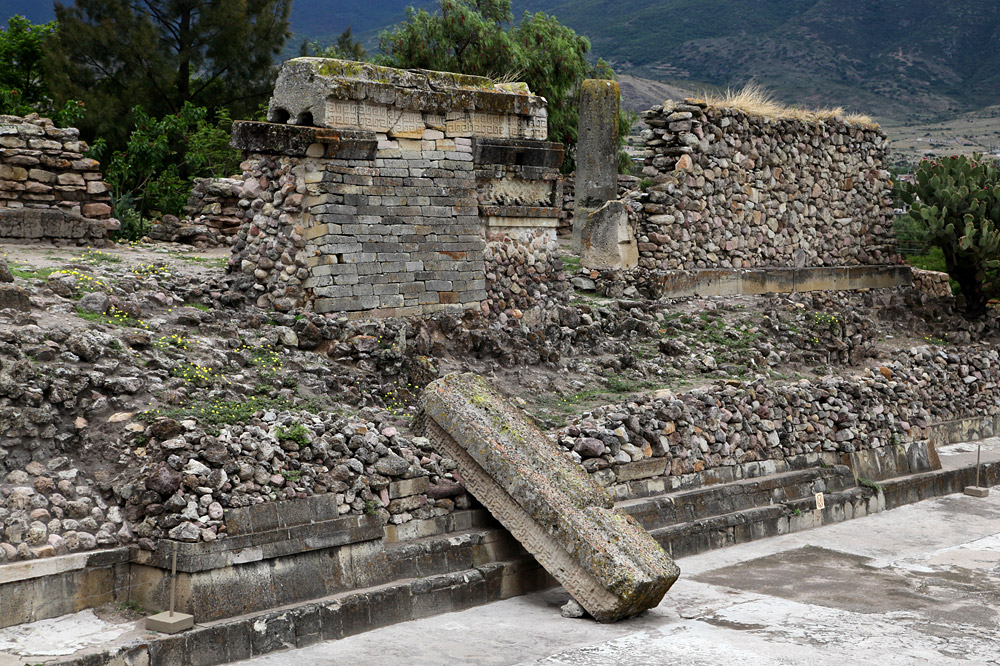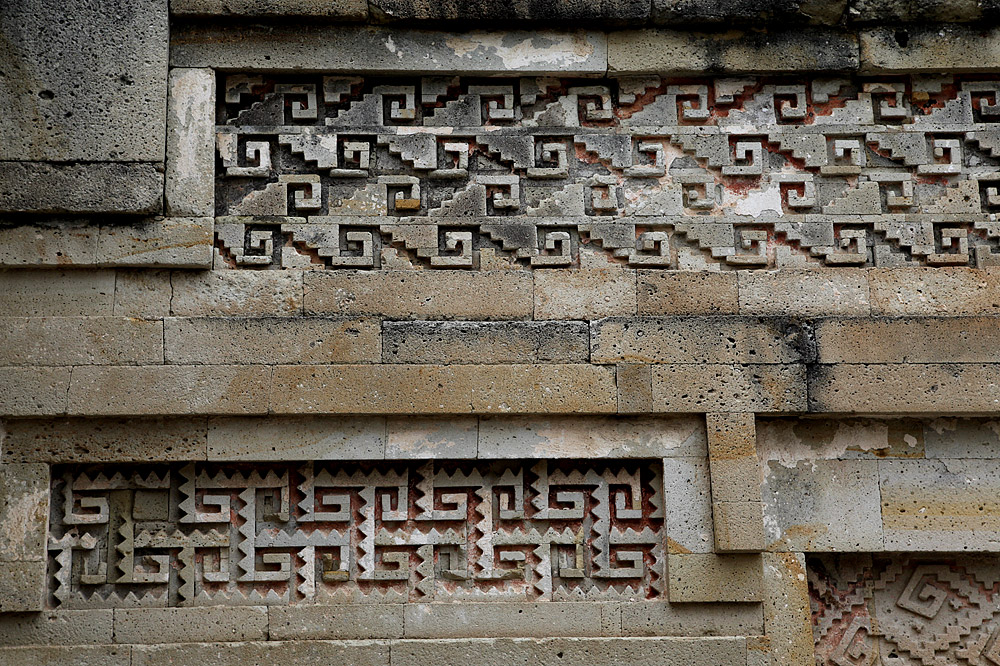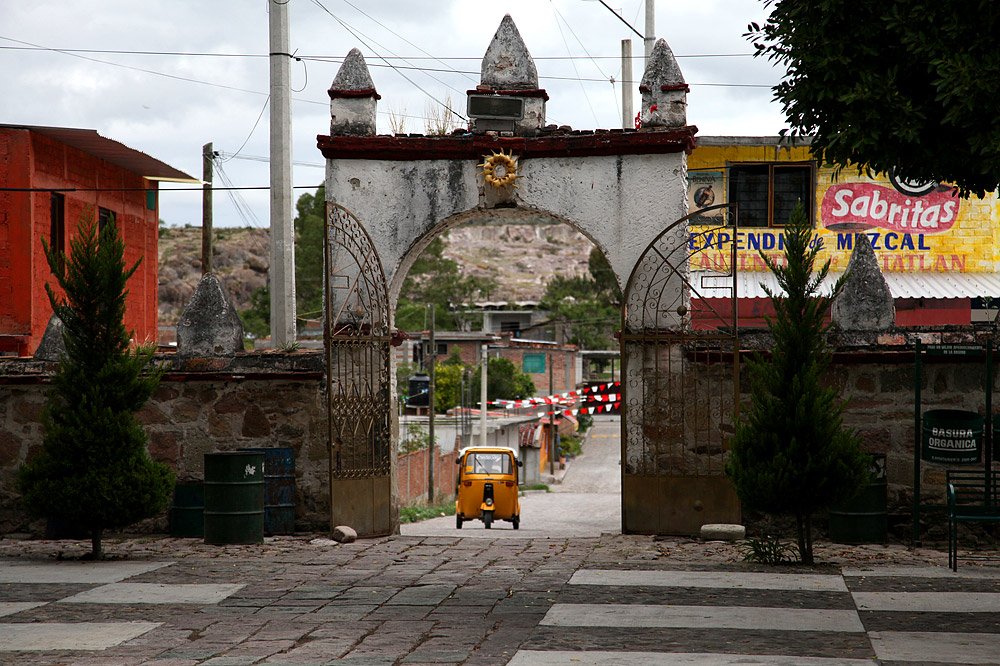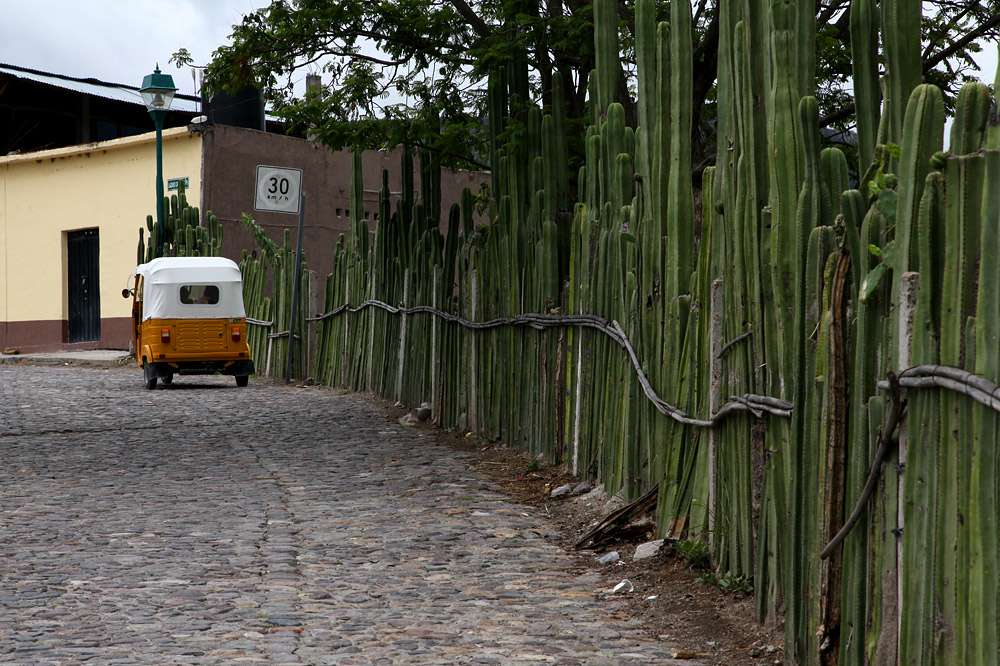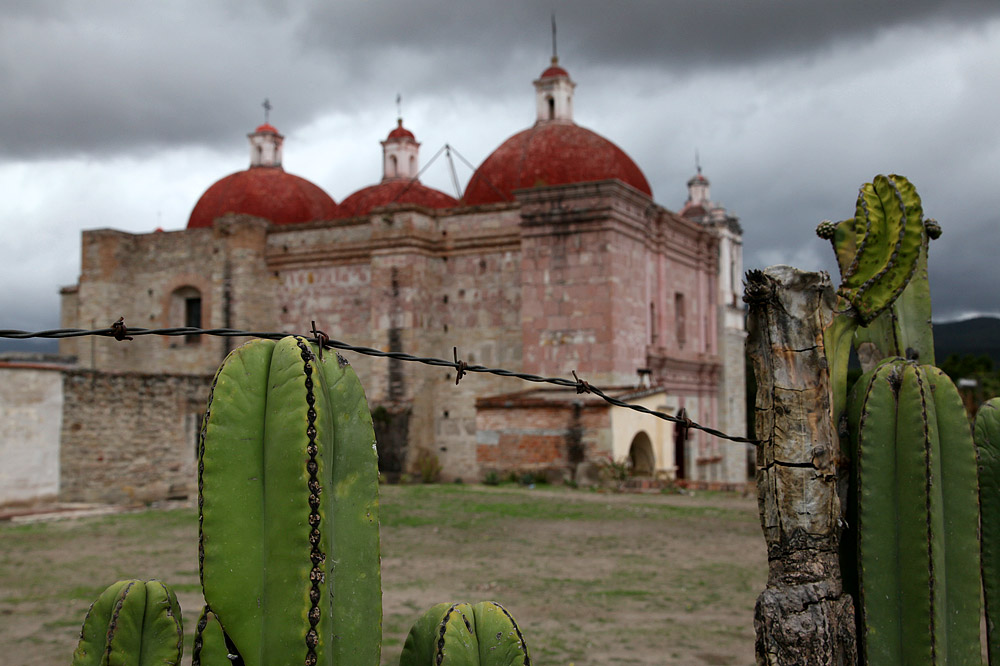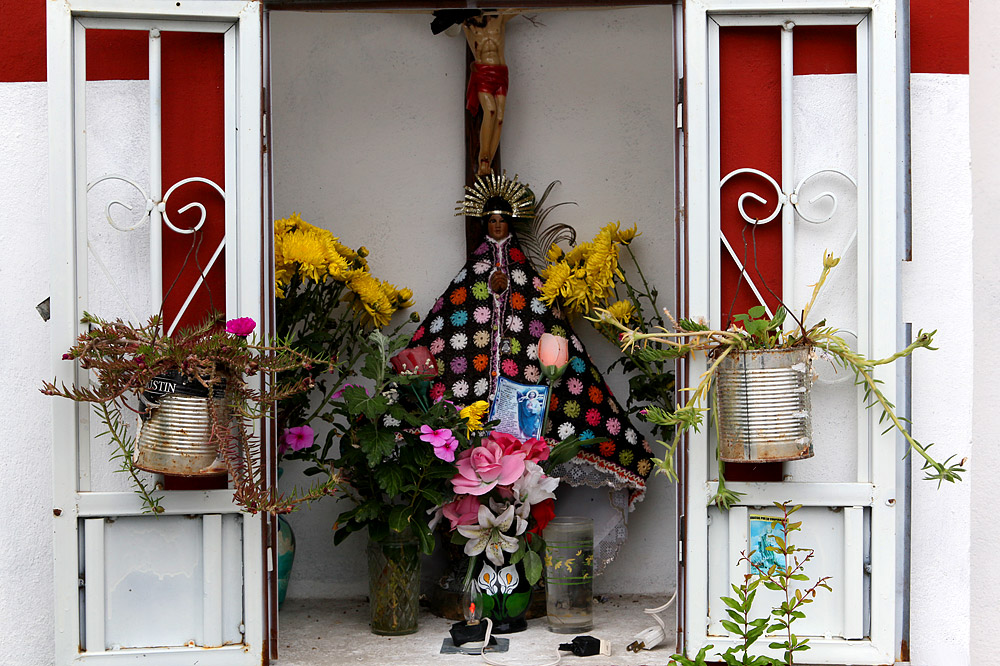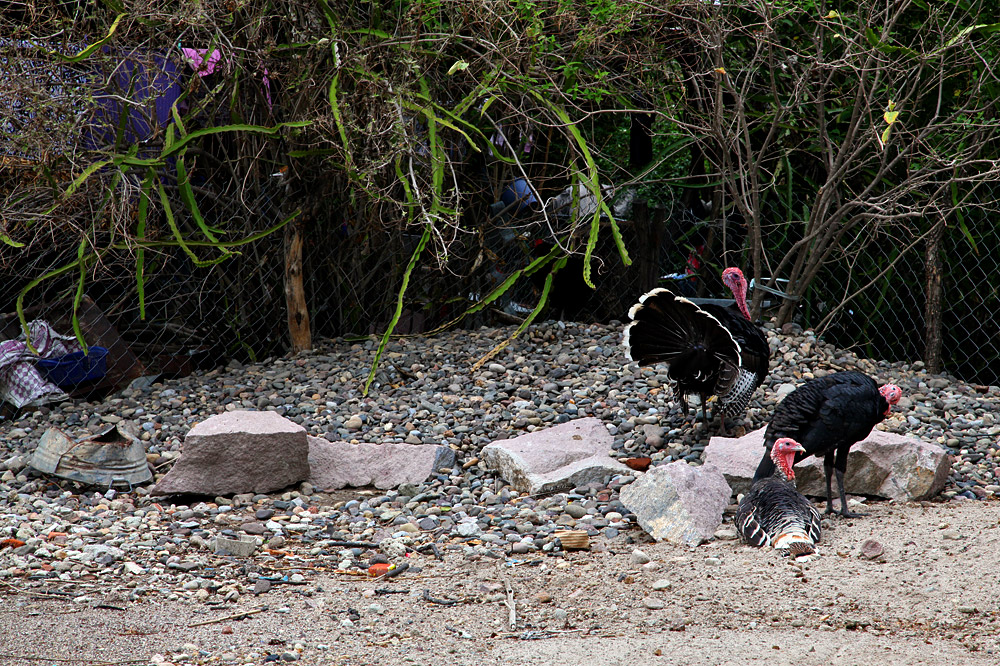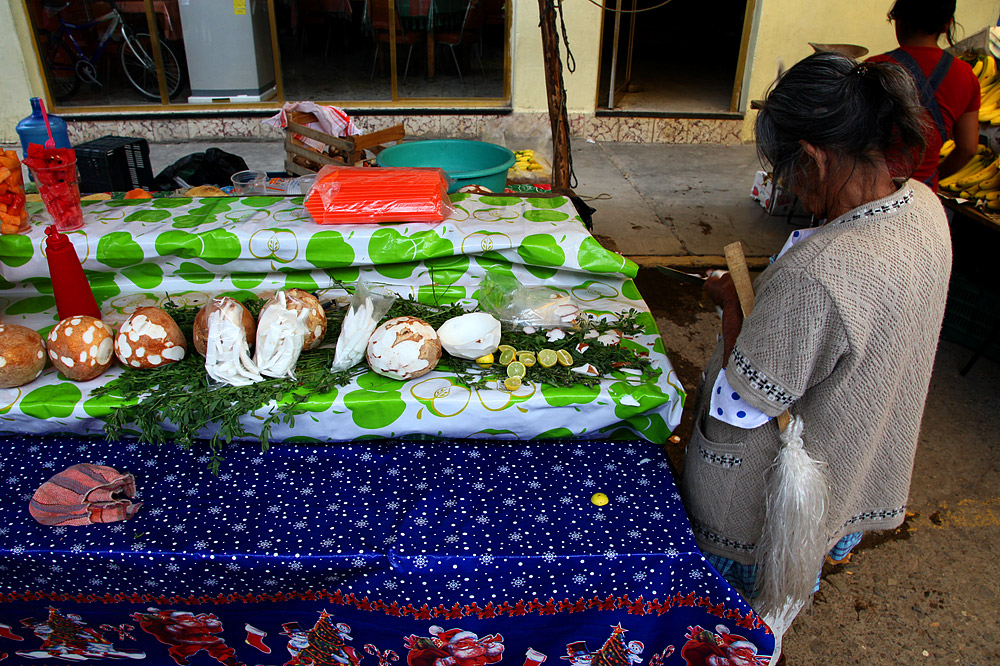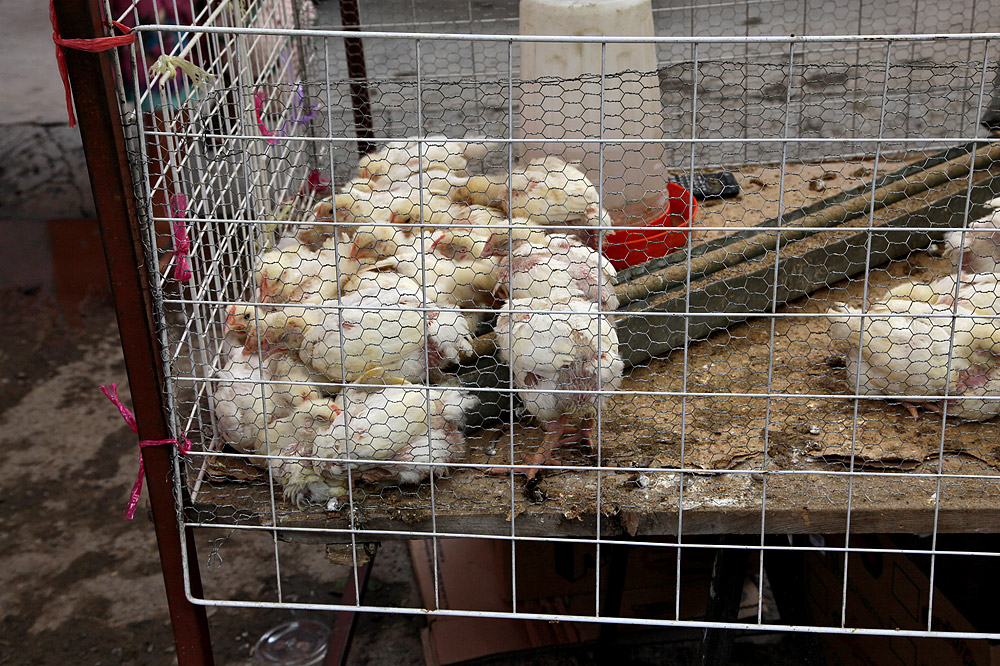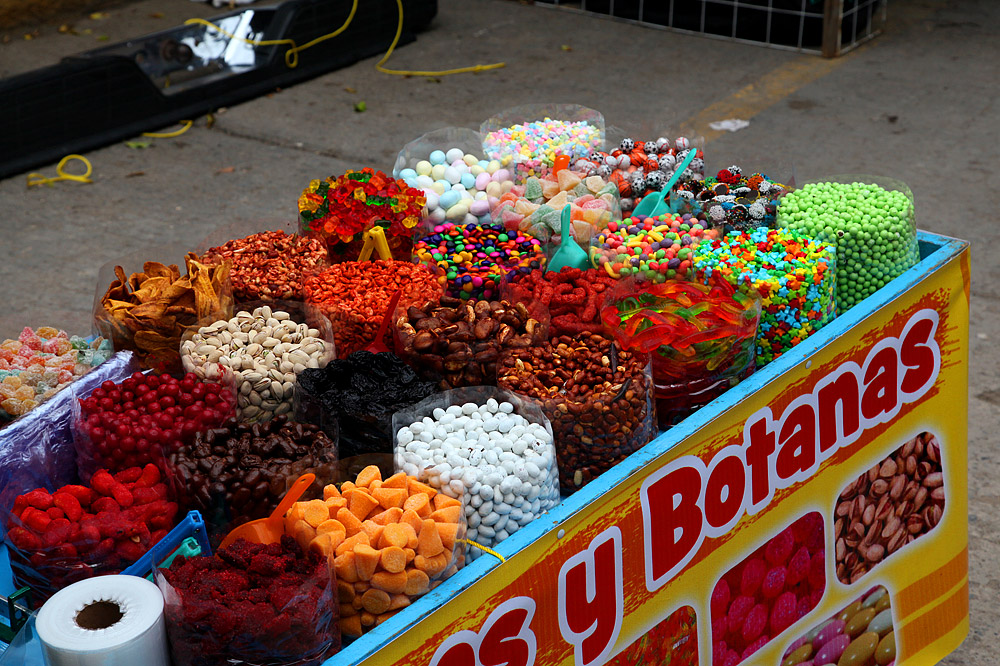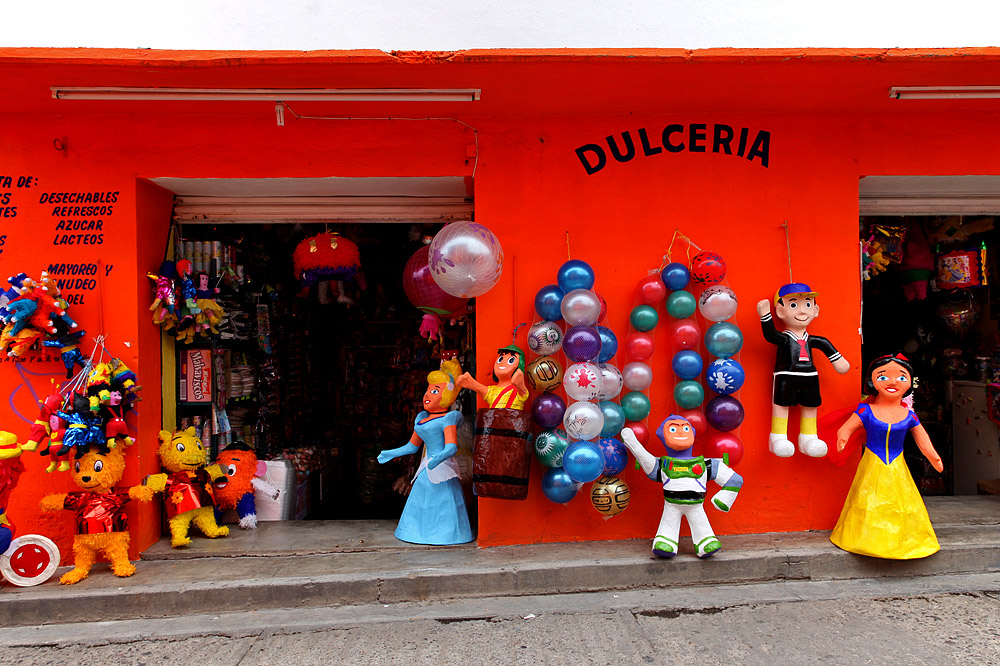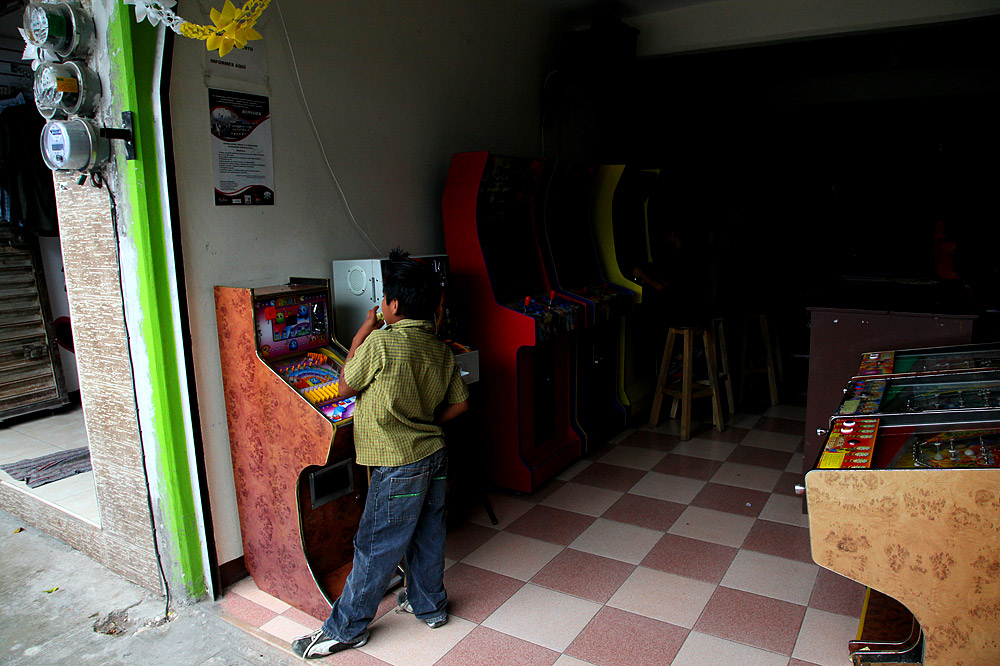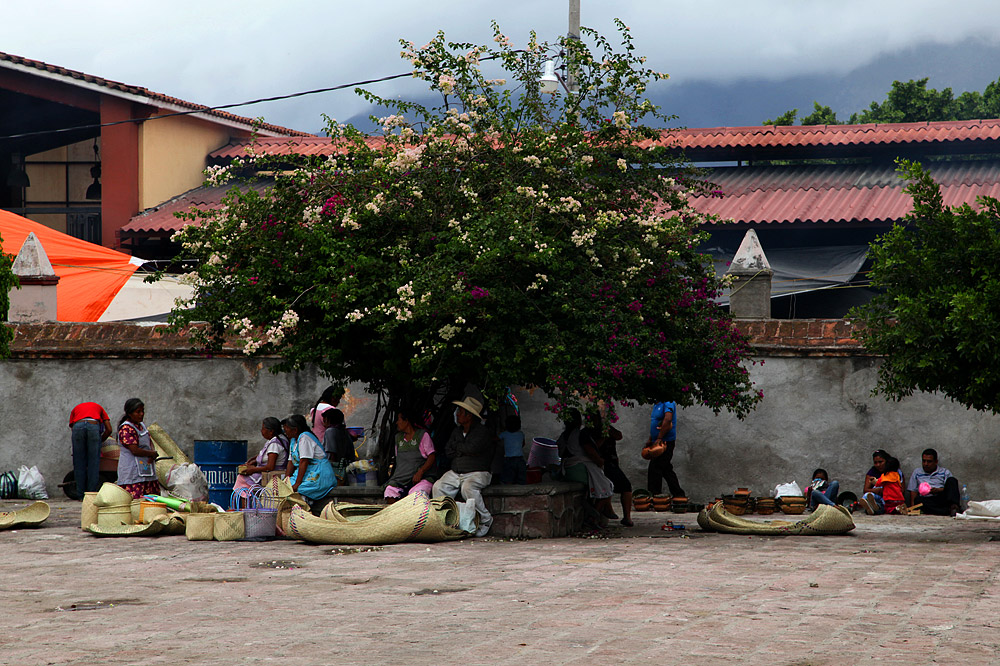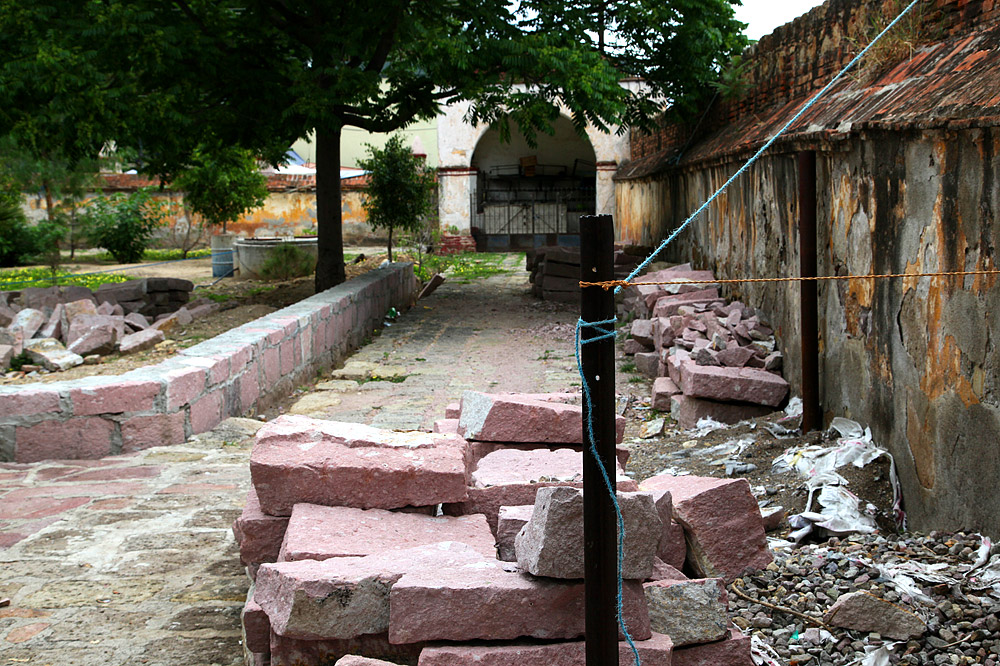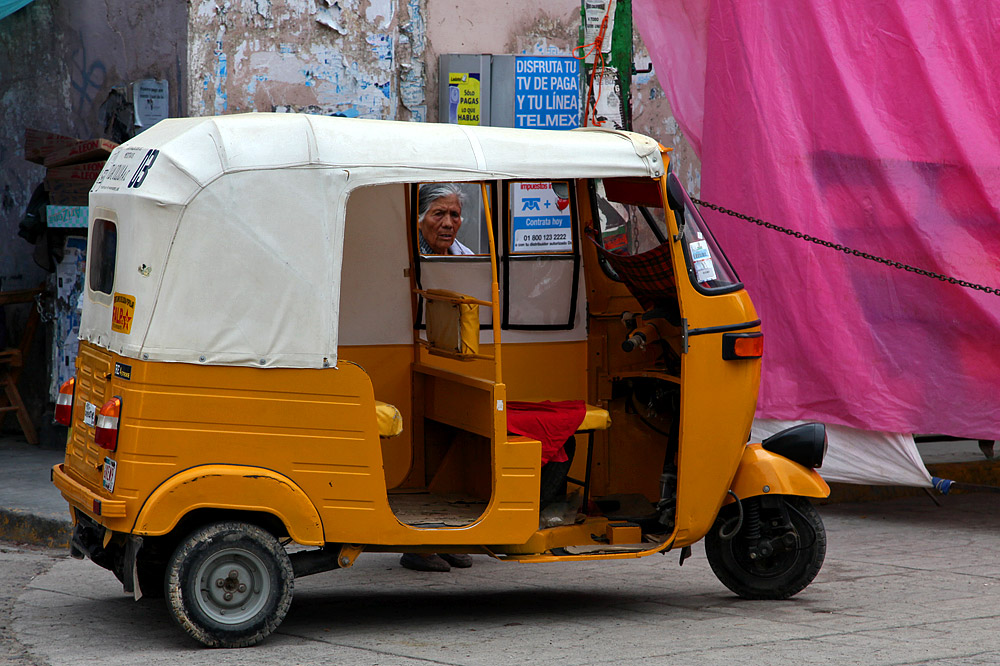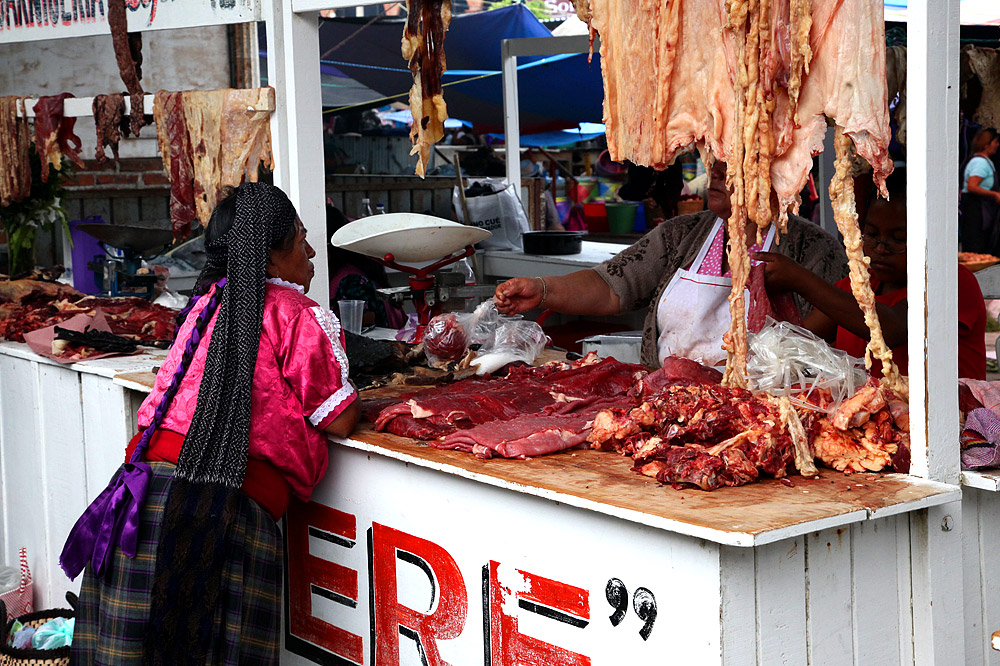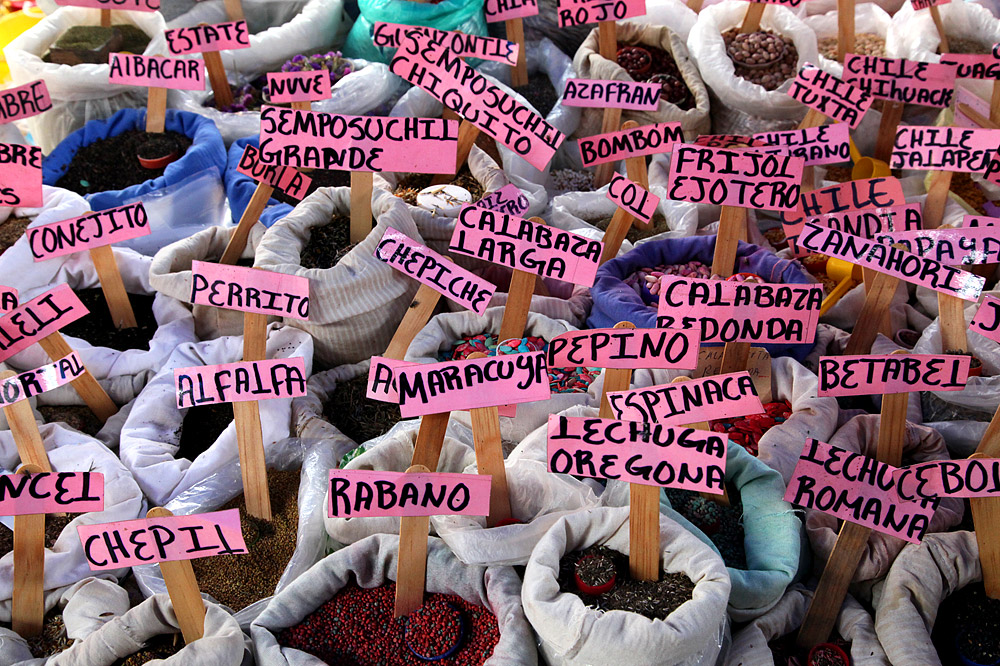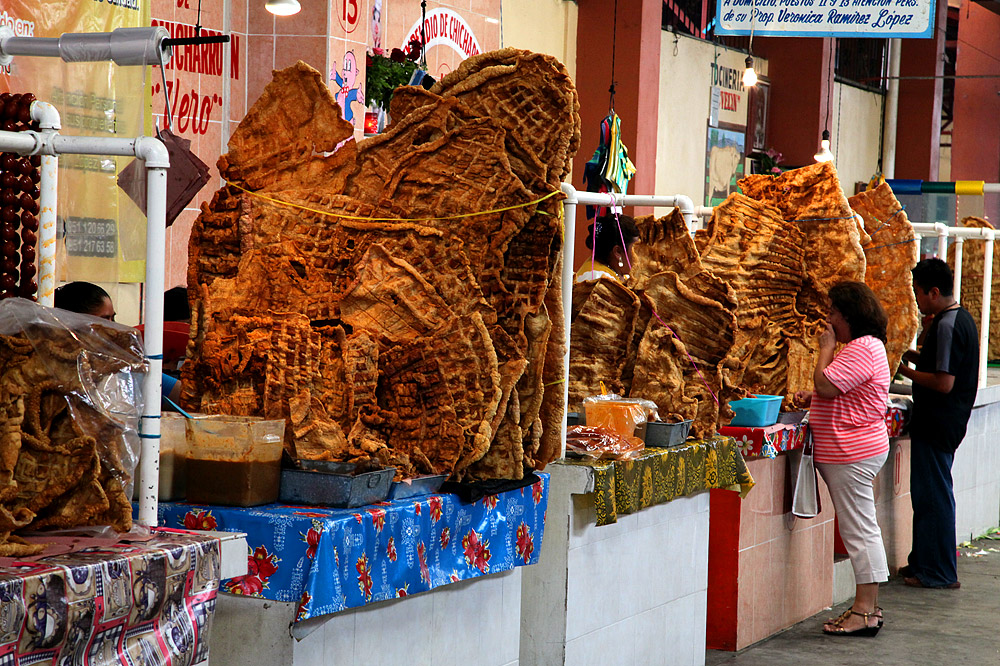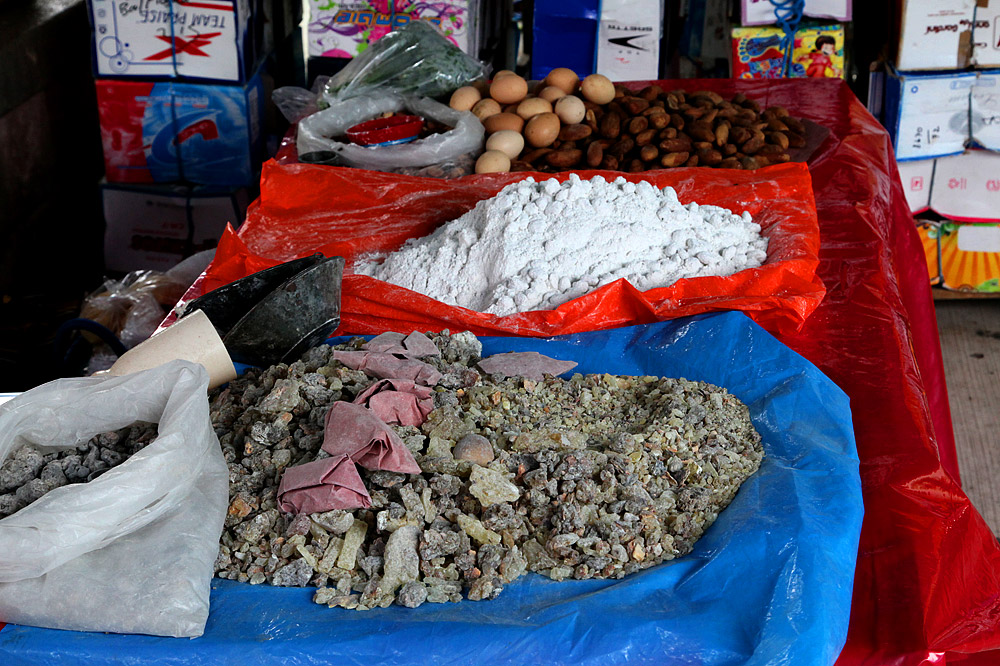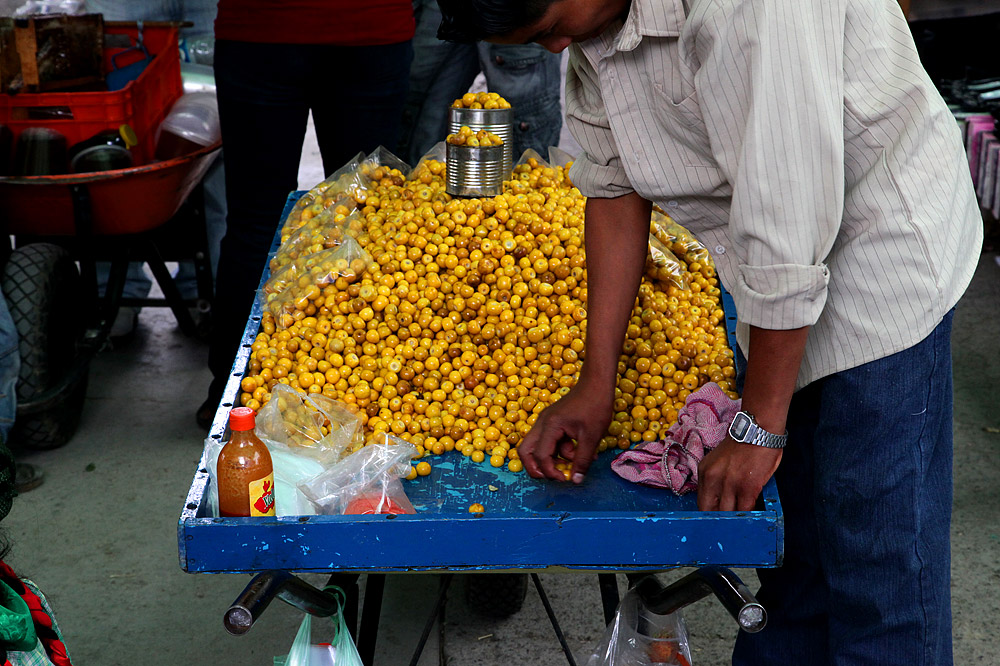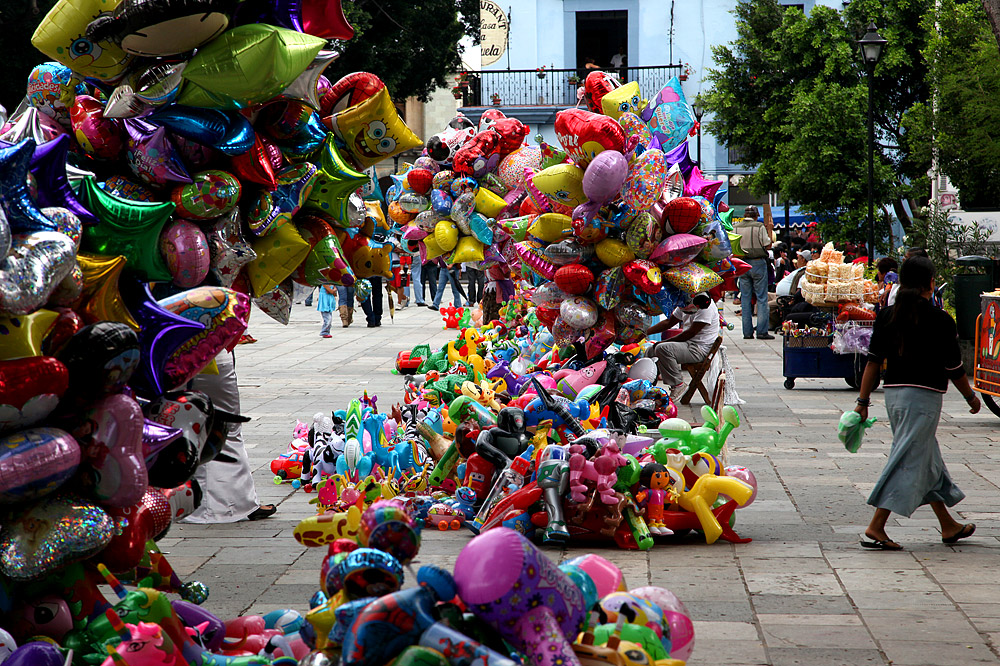A Tour of Sites around Oaxaca: Árbol del Tule, Weaver’s Town, Miltla Ruins, and the Sunday Market in Tlacolula
Thanks for your interest in my recent nine day trip to Oaxaca City, Mexico. I’ve broken the trip into eight parts loosely organized by the central activity of the day. Want to see the other posts? Browse the Oaxaca category.
While eating huevos rancheros, J and I decided to tag along with another couple on a organized tour of some sites east of town. Cost: 180 pesos per person.
Our first stop was the small town of Santa María del Tule about 15 minutes outside of town on the 190 “highway”. The town is famous for the massive tree growing in it’s center.
This Montezuma Cypress is the stoutest tree in the world, with a diameter of 38.1 feet. Its age is estimated at 1,433-1,600 years. It’s also home to a massive amount of chirping birds.
J taking a photo of the Tule tree that dwarfs the church next to it.
A view of its girth.
A view of its canopy.
Dude, Judas gave me a headache this big…
Next, we drove to district of traditional weavers on a road off the 190. A friendly lady with a large purple birthmark (or cochineal accident) on her chin explained how they spun yarn, what natural sources they used for dyes, and how it was woven into patterned rugs. Again, we splatted these ruddy bugs.
Road on the road to Mitla.
The elaborate pedestrian walkway in the middle of nowhere.
The view from the weaver’s house.
Nut busting.
Basket of natural dye sources and a grinding stone.
Our lady and her rambling yarn.
Demonstrating how quickly cochineal can change color with additives.
Loom.
Bugambilias.
Cochineal dyed yarn.
A view of the weaver’s row.
Our driver seemed sad on the way to the next destination, and I imagined him swerving into oncoming traffic to end it all.
But there was no murder/suicide and we reached the Mitla ruins without incident.
Mitla is the second most important archeological site in the state, and it was settled around the same time as Monte Albán. Though unlike the later, this site remained settled through a variety of changing hands until the present day.
Road near the Mitla ruins parking lot.
An intricate, mortar-free wall.
A view from inside the main courtyard.
Fallen pillar.
Detail of the stonework.
Quick, follow that taxi!
Damn, he’s getting away.
Oh well, I’ll just look at the church made with stones from the old temples.
Shrine.
Despite all rage by I’m still just a turkey in a cage.
Our last stop was the Sunday Market in the town of Tlacolula. As hyped as it was, it didn’t seem much different from the market in town, though there were more people dressed traditional clothes and were clearly in town just for the day stock up on machetes and fruit.
J and I bought sliced coconut, a bucket of red mangos, more bananas, bread, and a glass of tejate a drink made from corn and chocolate.
Coconut vendor in the market.
Hot chicks.
He mixes it with love.
Piñatas and toys.
All the cool kids stand this way.
Taking a break.
Granite.
Old man ponders car theft.
So tell me about these meats.
Well labeled sacks.
Do you know of any place to get some fried pig skin around here?
Copal incense, limestone, and nuts.
Nance fruit vendor.
For dinner, we had excellent and cheap tortas from El Gran Torta.
Again, the Zócalo. As we watched kids playing with baloons, we had more ice-cream and a candy called something like Swinkles or Milch (Milch?) that was a sour gummy rope with a packet of hot sauce. Then we had some fresh made potato chips with lime and chili sauce.
Balloon vendors in the Zocalo.
It was a sweet and spicy end to a hot day.


